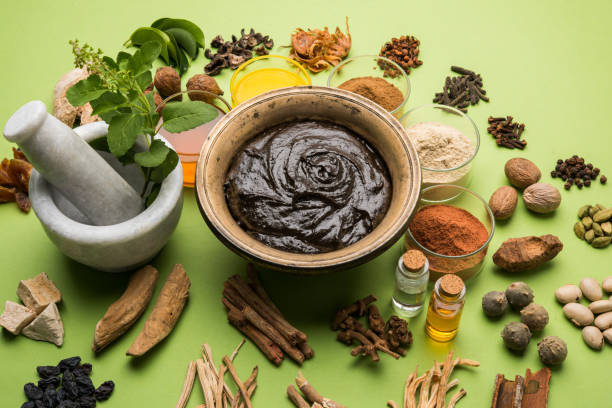Ayurvedic Science of Aphrodisiacs

The holistic view of constipation
January 10, 2019
Drinking Water with meals – the myth and the truth
March 6, 2019‘Vajikaran’ (Science of aphrodisiacs) and ‘Rasayan
Also Read: Holistic view of constipation
Vajikaran therapy renews all the ‘Sapta dhatus’ to reinstate perfect mental and physical health and well being. It improves defects of reproductive system in both males and females. The herbal combinations used are part of therapy which act on higher centers of brain and modulate neuroendocrine axis. Scriptures of this age-old Chikitsa say that, the man who seeks sexual pleasure should resort to Vajikaran chikitsa. It is the one of the best natural restorer of general strength and vigour.
By proper use of these formulations, one becomes endowed with good physique, strength, complexion, potency.
Read: 10 herbs for anti-aging and skin care
Common conditions representing sexual disorders are as below;
- Premature ejaculation: This is a condition in which the orgasm and climax
happens earlier than wanted i.e. sperm ejaculation occurs too early. It could be very frustrating for both men and women. There are many herbs in Ayurveda which can help through nitric oxide mechanisms by relaxing the corpuscavernosus muscle inpenis . - Erectile dysfunction (Impotency): This is a condition in which males fail to maintain adequate erection for sexual intercourse. It is considered a major health problem and is a common cause of distress. ED is also a marker for cardiovascular diseases. It commonly effects diabetic and high blood pressure patients. Impaired endothelial function results in impaired relaxation and is primary cause of Erectile dysfunction. Vajikaran herbs like Terminalia
chebula andsyzigium cumini are successfully used to treat Erectile dysfunction. - Low sperm count (Oligospermia): Low sperm production could be hormonal as well as, due to less blood circulation to genitals. An enzyme called Arginase influences the blood circulation to genitals. Arginase inhibitors have
ability to increase blood circulation to the genitals. And, Cinnamoncassia is one of the most potent herbal Arginase inhibitor whose mechanism of action is just like Viagra. - Lack of sexual desire: Sexual desire in both sexes is controlled by hormones called dopamine and prolactin. There is a category of herbs in Ayurveda which produces, or preserves, dopamine levels by inhibiting enzymes called Mono
amin oxidase-b inhibitors. Cinnamon cassia and Glycyrrhiza glabra are natural Mao-b inhibitors and can be used for lack of interest in sexual activities. - Unsatisfactory performance in elderly: As we age we lose the power of replacing the worn out cells and tissue like when we were young. But here also Ayurveda comes help with the ‘Rasayan’ therapy. Rasayan
are the drugs which havecapacity to renew the Saptadhatus or tissues explained above, as well asshukra which can again make sexual organs work like when one is younger. - General weakness: Rasayan herbs are great for general weakness as they have
capacity to renew all the organs and tissues by their antioxidant action decreasing the toxicity inbody . Triphalachurna which contains Terminaliachebula ,phyllanthus emblica and Terminaliabellirica are allRasayan drugs acting on three pathways represented by Vata, Pitta and Kaph respectively.





2 Comments
Like!! Really appreciate you sharing this blog post.Really thank you! Keep writing.
Thanks so much for the article post.Thanks Again. Cool.